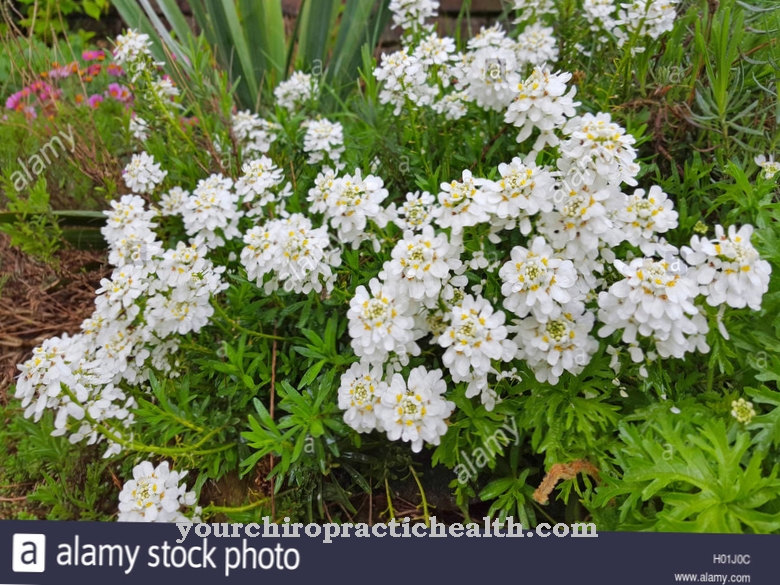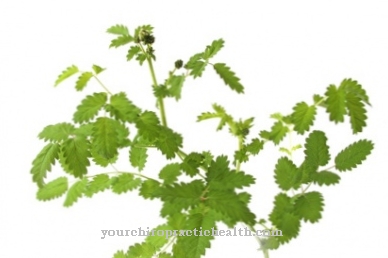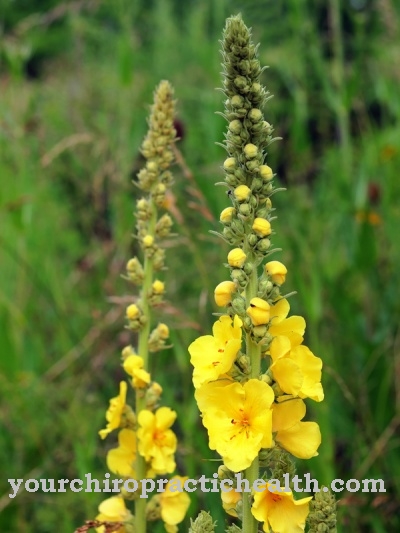radish is particularly popular in the kitchen. The tuber has healing properties that have now almost been forgotten.
Occurrence & cultivation of the radish

radish was already used by the ancient Egyptians for medicinal purposes. In addition to onions and garlic, the builders of the pyramids also received radish, should this preserve health. The taste of radish is spicy and pungent, which is why it is often rejected by children. There are different types of radish. The black tuber proves to be the most effective against the treatment of diseases.
The radish originally comes from the Mediterranean region. Here he could be localized in North Africa, Europe, Western Asia to Pakistan. The cultivation of field radish is now widespread worldwide. The radish is an herbaceous plant that lasts for about one to two years. Depending on the species, the roots are more or less fleshy. For medicinal uses, only the lower part of the plant is usually processed. The above-ground part is often inconspicuous.
Some species have four-petalled flowers that can be white, yellowish, pink, or red. In addition, there are pods in some places that are used for reproduction and contain other seeds of the radish. The radish is also related to mustard, beets and some types of cabbage. The tubers can take on different colors such as white, pink or black.
Effect & application
The radish is used for various medicinal purposes. The tuber was probably used in China for the first time to alleviate symptoms. The history of the radish in Europe, however, is largely unknown. The tuber is collected between spring and autumn. The different species mature at different times. The ingredients are responsible for the beneficial properties of the radish.
These are raphanol, mustard oils, minerals, magnesium, vitamins, enzymes, glycobrassicin, mustard oil glycosides, linolenic acid, linoleic acid, boron, bromine, fluorine, phosphorus, cobalt, manganese, sulfur and zinc. At the same time, the plant contains a high amount of vitamin C. In this way, it can be seen as a supplement to the vitamin balance. The radish has an expectorant and antispasmodic effect when coughing and runny nose. The mustard oils increase the production of bile juice. This in turn plays a central role in digestion. For example, it helps break down dietary fats for better digestibility.
The application of the radish can be done in several ways. It is usually eaten straight. Cut into thin slices, the tuber can be eaten straight away, on bread or in combination with a salad. Adding a little salt takes the spice out of the tuber. However, you shouldn't use too much salt. A syrup helps against coughs and other respiratory diseases.
Some cough syrups from the pharmacy already contain ingredients from the radish. However, the syrup can also be made independently. The ingredients are just a black radish, water and sugar. The high content of sugar makes the liquid durable. However, it should be used up quickly to ensure its effectiveness. For homemade radish juice, the root is rubbed and pressed. As part of a radish cure, 100 milliliters should be drunk daily on an empty stomach.
The amount can be increased constantly until about 400 milliliters are consumed after 3 weeks. A reduction should then take place. Such a cure is recommended for people with gout, rheumatism, springtime fatigue or indigestion. Radish usually does not cause any side effects or unpleasant side effects. Only people with a sensitive stomach should avoid large amounts of the tuber.
Importance for health, treatment & prevention
Radish has numerous beneficial health properties. As a rule, it is used to treat existing complaints. At the same time, a cure can also prevent illnesses, especially in the cooler months. The high vitamin C content supports the immune system and ensures that pathogens are less likely to cause diseases. In a case of scurvy, the supplement with radish is also suitable. However, such a vitamin C deficiency is very rare in Western countries.
The root stimulates the production of various digestive juices, such as bile. In this way, digestion can get going and symptoms such as constipation and flatulence are relieved. The effect against digestive complaints has been scientifically proven. The use of radish proves to be particularly useful in the case of fat intolerance. At the same time, the ingredients manage to kill certain bacteria. These are mainly triggers of respiratory diseases.
If there is inflammation of the respiratory tract or a long-lasting cough, the tuber can provide relief. The radish offers numerous advantages over chemical drugs. So side effects are not to be expected. However, people with gallstones should switch to an alternative. Still, the radish is an inexpensive, natural remedy. Various tricks help to take the edge off the root. For example, it can be placed in water or vinegar.
A low dose can also be used to treat children, provided that they do not refuse to take it because of the spiciness. The healing powers of the radish are particularly important as a treatment method. The prevention of complaints is also possible, but is used relatively rarely.



























